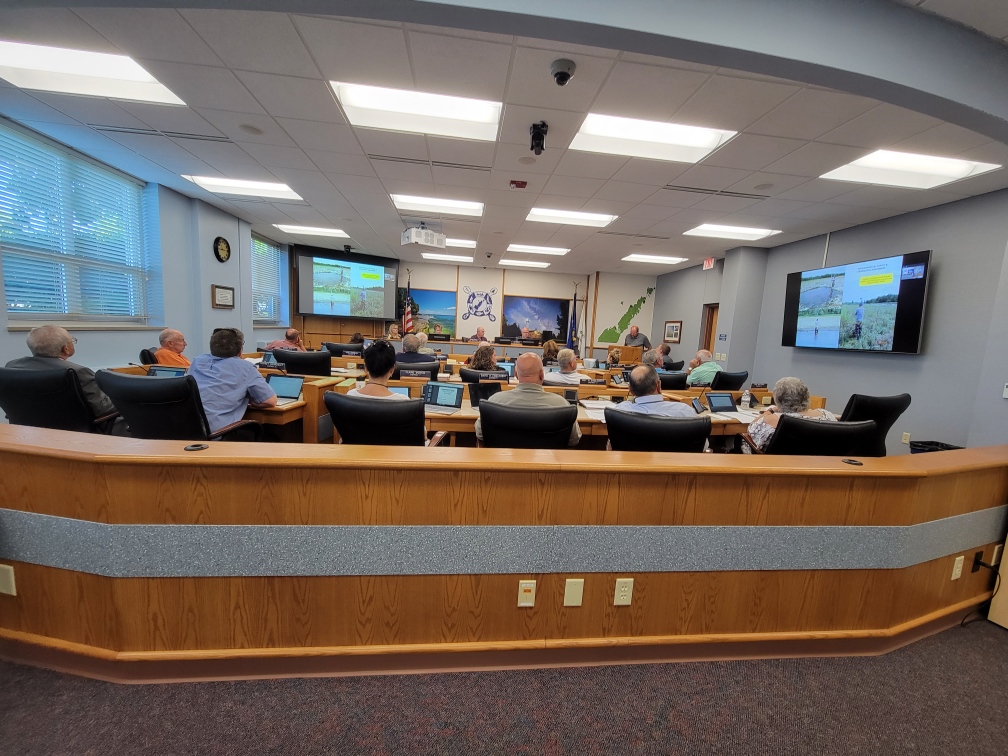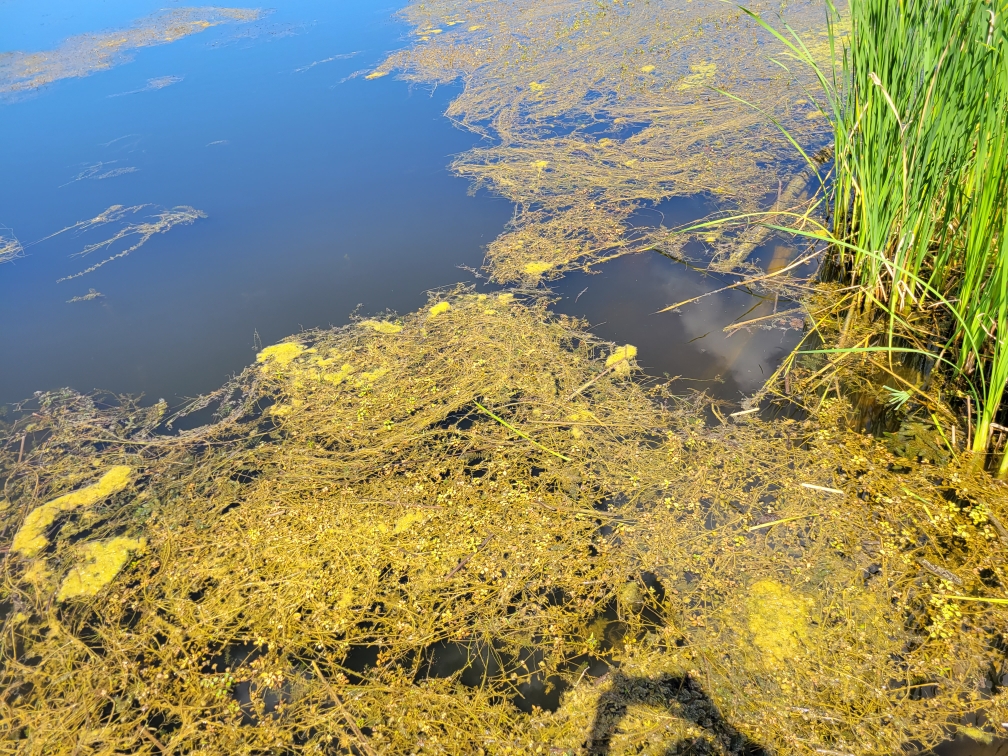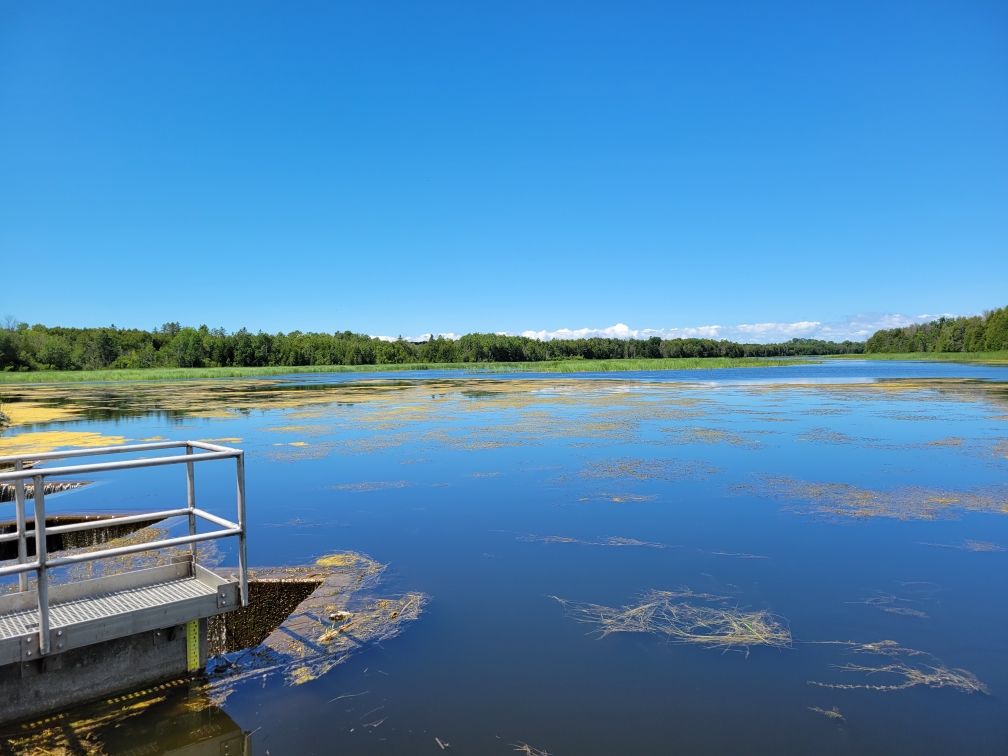Removing the Forestville Dam is a possibility, Door County Corporation Counsel Grant Thomas told the Door County Board of Supervisors last month.
Thomas and Door County Conservationist Greg Coulthurst briefed supervisions during the July 26 County Board meeting on the status of the Forestville Dam County Park. A pond contained by the dam on the Ahnapee River includes approximately 65 acres of shallow water that is under both county and private ownership.
The pond is the result of a series of dams built across the Ahnapee River at the same location over the last 140 years. The earliest dams were used to power a grist (grain) mill at the site. The dam was rebuilt on several occasions, most recently in 1980. While the dam is structurally sound, there has been concern for the quality of the water in the pond.
Thomas said the Friends of The Forestville Dam group, the Southern Door Fire Department and other interested individuals petitioned the Wisconsin Department of Natural Resources on May 12 to establish a minimum water level in the pond, “something the agency has never done before in the state,” Thomas said.
DNR representatives and county Soil and Water Conservation staff visited the dam in late July and are studying the request, Thomas said.
Coulthurst reported on the process of refilling the pond, indicating there are weeds clogging some spots. The weeds are expected disappear within the next year, he said.
Should the state adopt a minimum depth requirement, Thomas said the county could hand over ownership of the Forestville Dam County Park to the Village of Forestville or to the Friends group. Abandoning the dam, which Thomas said could lead the DNR to remove it, also is a possibility.
The County Board at its Aug. 23 meeting approved expanding the park by adding a property the county acquired located at 449 Mill Road in the Town of Forestville.

Study found high phosphorus, low dissolved oxygen
In late 2016, Coulthurst and the county Soil and Water Department’s Brian Forest, assisted by aquatic scientists from the DNR, began a two-year study of the pond. Among the study aspects were water quality and depth, aquatic plant species and fish population.
A week before Christmas 2018, the study was presented at a packed public hearing at the Forestville town hall in Maplewood. The study noted the millpond – whose watersheds include “the upper reaches of the Ahnapee River and Silver Creek and their associated tributaries” – was “a once healthy multi-use waterbody.”
The study found:
- “Decades of both anecdotal and scientific observation have begun to document a steady decline of the overall health of the millpond.”
- “Twenty-five percent of the upstream samples taken throughout the summer exceeded the established stream threshold for total phosphorus concentrations, while two out of three samples taken in the millpond exceeded the acceptable threshold.”
- Temperatures on the upper river “did not rise above tolerable levels, but dissolved oxygen levels dropped below established thresholds several times throughout the sampling season.”
- “Concentrations of phosphorus and chlorophyll, along with the plant population, place the millpond in the category of a eutrophic water body – a water body which is rich in nutrients and supporting a dense plant population.”
- “The side effect is the decomposition of the plants in a eutrophic water body kills animal life by cutting off oxygen, and that can be seen in the fish population, where carp is the most abundant, with large mouth bass a distant second.”
- The maximum water depth was six feet, while 92 percent of the pond was below three feet. The study suggested “future efforts should target improvement of these parameters.”

County faced pushback after drawdown began
In early 2019, the County Board chose the least expensive alternative to attempt correcting the problems.
Supervisors were given a choice of doing nothing; dredging and disposing of the sludge at a DNR approved landfill; or drawing down the water level (to kill invasive animal and plant species) before refilling the pond. At the time the decision was made, now-retired Door County Highways Superintendent John Kolodziej estimated the dredging would approach $750,000 for removing sludge from the pond bottom and trucking it from the site.
County supervisors chose the draining option and work to draw down to water level began in November 2019.
The Friends group formed and began asking for donations to legally halt emptying the millpond. The group filed for an injunction in January 2021 to stop the drawdown.
However, the case was dismissed in Door County Circuit Court on Jan. 5, 2022.
The Friends group also circulated petitions in 2019 seeking recall elections for two County Board members. Supervisor Roy Englebert had voted for the drawdown while representing the district where most of the pond is located. He defeated challenger and Friends member Lora Jorgensen in a recall election. Englebert continues to served on the board.
Supervisor John Neinas represented land on the millpond’s west side. Owning property there, he abstained from voting on the drawdown plan and announced he would retire from county government in April 2020. His challenger in the recall effort failed to collect a valid number of signatures on election nominating papers.
About half of current County Board members were first appointed or elected after the drawdown began.

Friends group stresses natural history of dam
Friends group members have asserted their concerns at recent meetings of the County Board.
None spoke at the July meeting of the board.
However, member Christine A. Reid sent email comments to Knock following the meeting.
“The topic of removing the Forestville Dam and returning the Ahnapee River to its ‘natural state’ has popped up more and more frequently,” Reid wrote Aug. 1, “often used as a cudgel to deter people opposed to the drawdown.
“The natural state was a forest, thus the name Forestville. The Ahnapee watershed was home to beavers. When people started mismanaging the land they cut the forest and killed the beavers, called them pests and continued to eradicate them. The miller that built the first dam likely took ownership of a beaver dam.”
Referring to an 1800’s plat of the area, Reid wrote, “The Forestville Flowage has always been a wide section of the riverbed carved out by glaciers. Small tributaries start the narrow headwaters that spill into the wide section, which also has hundreds of tributaries up and down both sides and very active springs.”
“The pinch point below would be an ideal home for beavers – build dams,” Reid said. “Due to the impact of climate change, beavers are being reintroduced in the West to help deter fires. Live and learn.”
The Friends of the Forestville Dam has a Facebook page in which the millpond is referred to as “The Forestville Swamp.”

